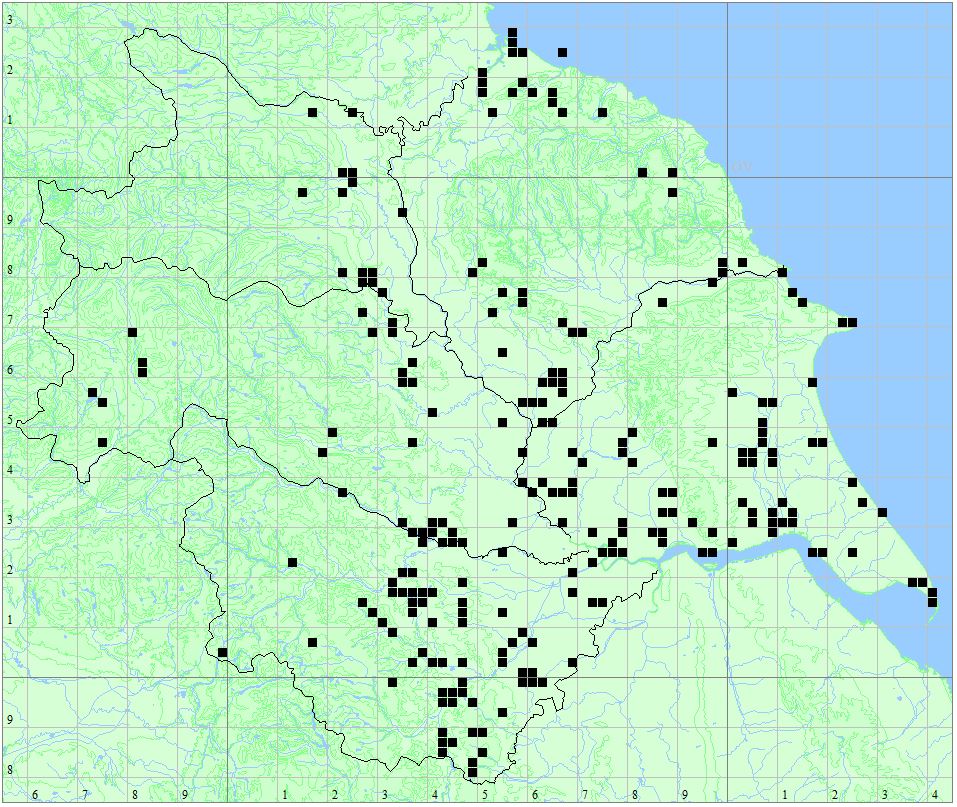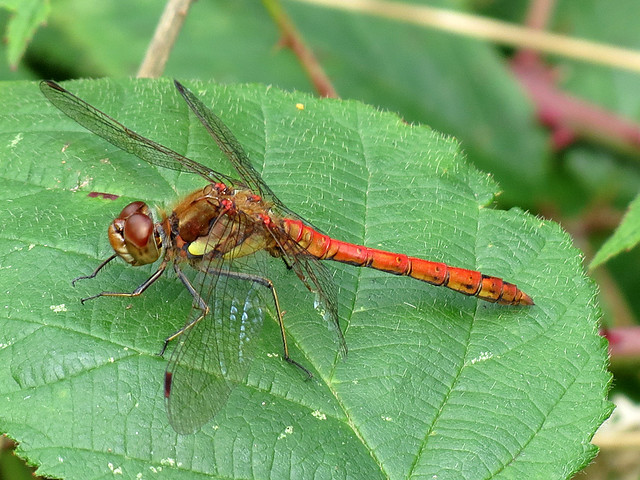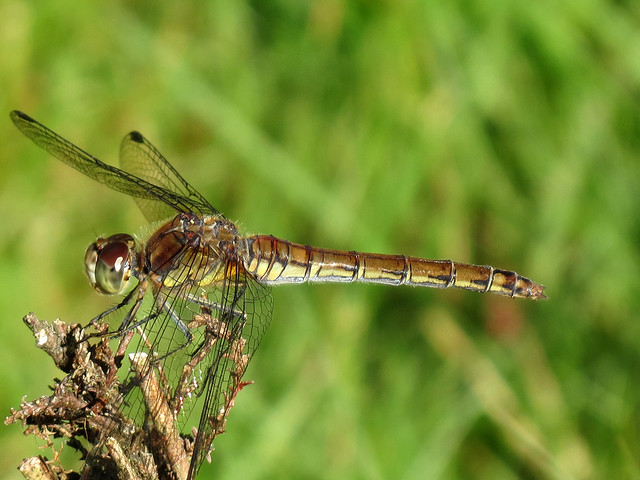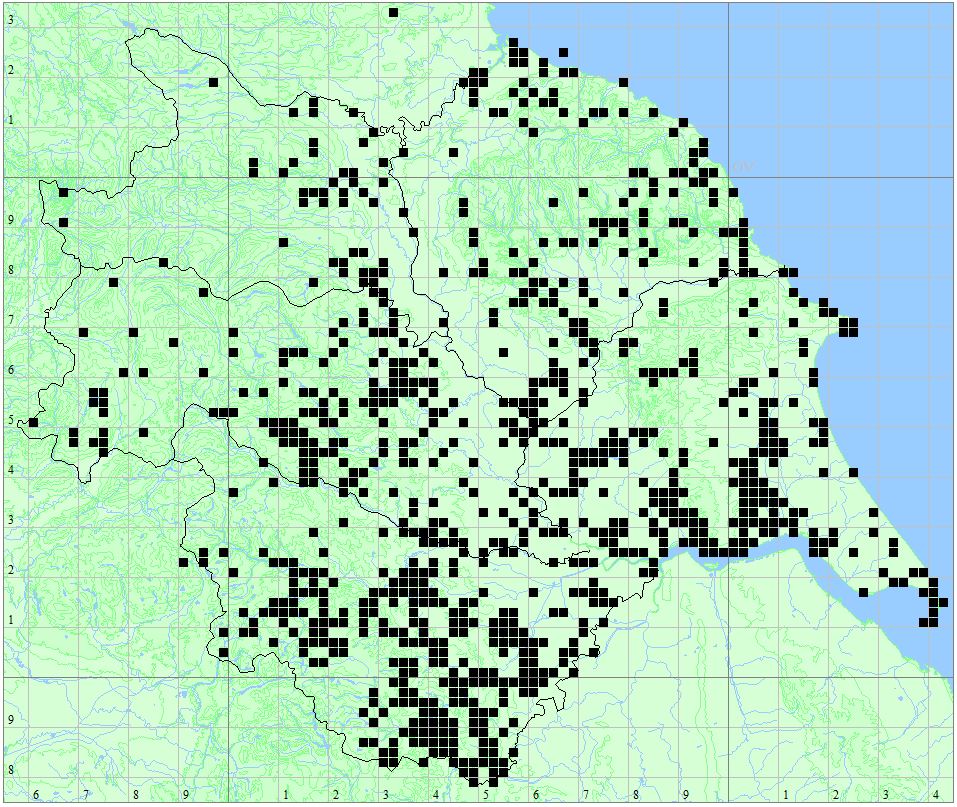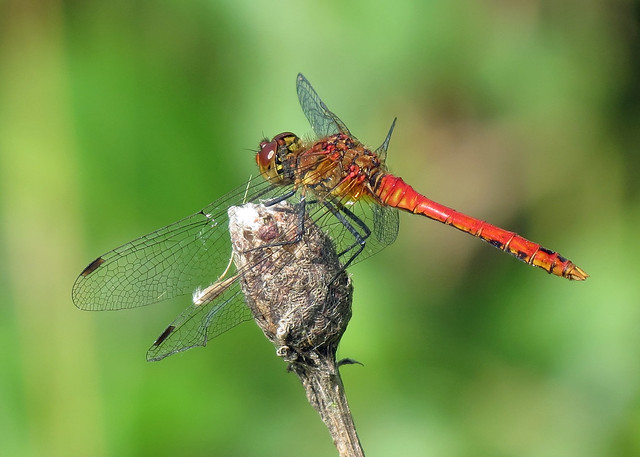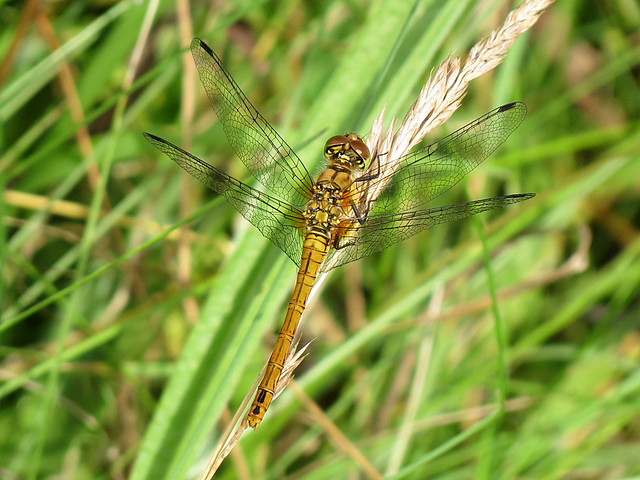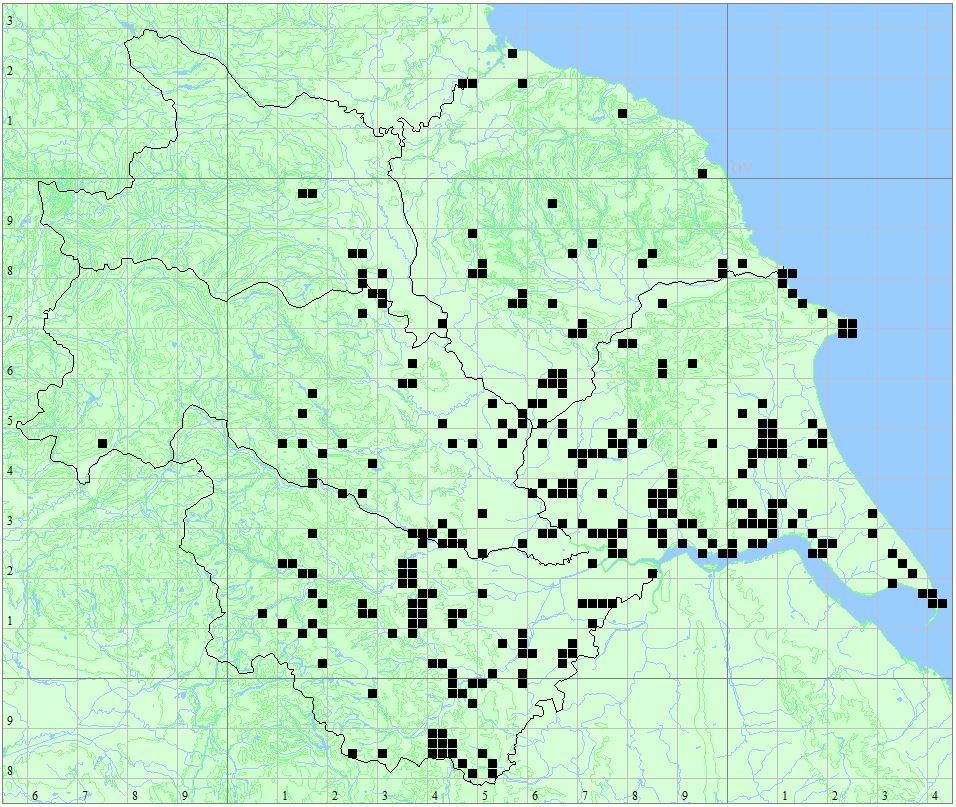<-Previous Species – Next Species->
Length
50mm, Wings 78mm
Males
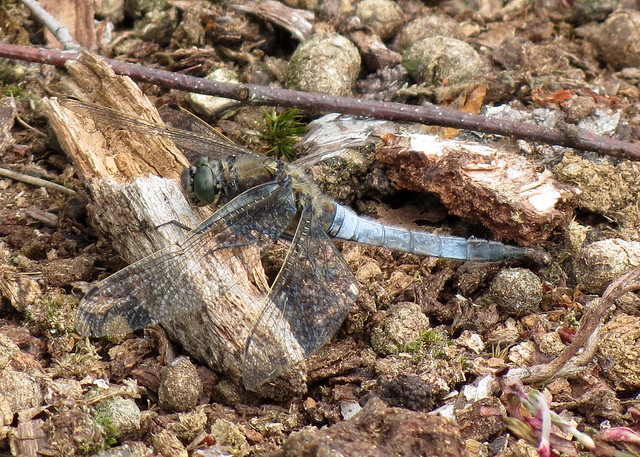
Thorax black, no antehumeral stripes; Abdomen top is blue with yellow spots towards sides, black tip; legs black.
Females
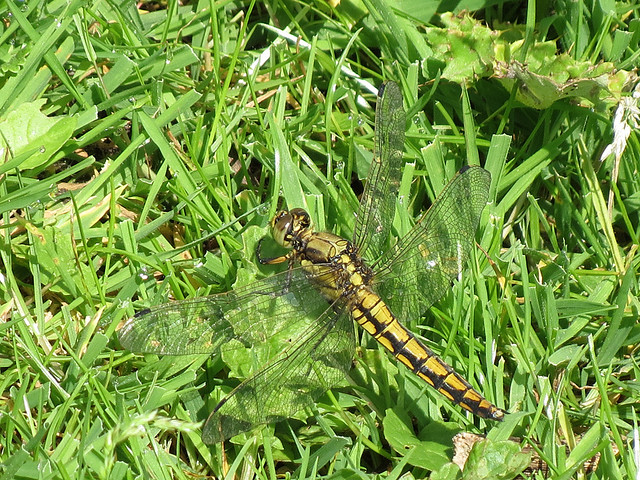
All yellow with 2 black bands on upper surface abdomen.
Habitat
Prefers lakes, ponds, gravel workings, slow rivers or marshes, with exposed mud, stones or bare patches where the male can perch.
Behavior
Highly territorial, males perch on bare areas of ground, typically on slightly raised areas such as stones, logs or bare soil, on the lookout for females and rival males. When patrolling over water they fly low, skimming over the surface. Copulation can take place in flight, where it will only last for a few seconds, though sometimes this can take place in vegetation where it may last up to 15 minutes. Oviposition occurs by dipping the abdomen into water, with the male often remaining nearby. Larvae live amongst the bottom silts, emerging after two to three years. Emergence usually takes place on vegetation, often several metres away from water.
Flight Period
Distribution Map
Locations
- Rodley Nature Reserve
- Moorgates Quarry LNR
- Thorne Moors – Humberhead Peatlands NNR
- Thorpe Marsh
- Oakhill & Goole Brick Ponds
- Paull Holme Strays
- Treeton Dyke
- Rabbit Ings
- Walton Colliery Nature Park
- Pugneys Country Park
- Nosterfield Local Nature Reserve
- Fairburn Ings
- Johnny Brown’s Common
- Potteric Carr
- Spurn Point
- Skipwith Common
- Saltmarshe Delph
- Pulfin and High Eske Nature Reserve
- Oak Road Lake, Hull
- North Cave Wetlands
- Hornsea Mere
- Filey Dams
- Eastrington Ponds
- Broomfleet Washlands
- Noddle Hill Nature Reserve
- Tophill Low Nature Reserve
